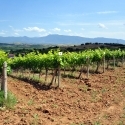Global Maize Project

The Global Maize project is an interdisciplinary, international research effort with an overall objective of creating local, ecological intensification (EI) practices for maize production that increase yields at a faster pace than current farmer practices. Such improvements are needed to meet demands for environmental improvement and security of feed, fiber, food, and fuel supplies.
The basis of the Global Maize project is ecological intensification (EI). Ecological intensification is a production system that satisfies the anticipated increase in food demand while meeting acceptable standards for environmental quality (Cassman, 1999). Unlike past high yield efforts, EI focuses not only on production but also profitability, sustainability, and creating a favorable biophysical and social environment.
Each project location shares a basic experimental design - comparing two management system treatments: 1) farmer practice (FP) and 2) EI. Measurements include biomass and nutrient accumulation as well as nitrogen use efficiency. The team of scientists at each location determines which specific management practices make up the FP and EI treatments.
Key to the Global Maize project is determining the potential yield of maize at each research location. Potential yield is the "maximum yield that could be reached by a crop in given environments, as determined, for example, by simulation models with plausible physiological and agronomic assumptions" (Evans and Fischer, 1999). The Global Maize project is using the Hybrid Maize crop growth simulation model to estimate potential yield (Yang et al. 2004). Yields in both the FP and EI treatments are being compared to their potential yields to determine the yield gap between what was possible and what was actually attained - the larger the gap, the more room for improvement.











